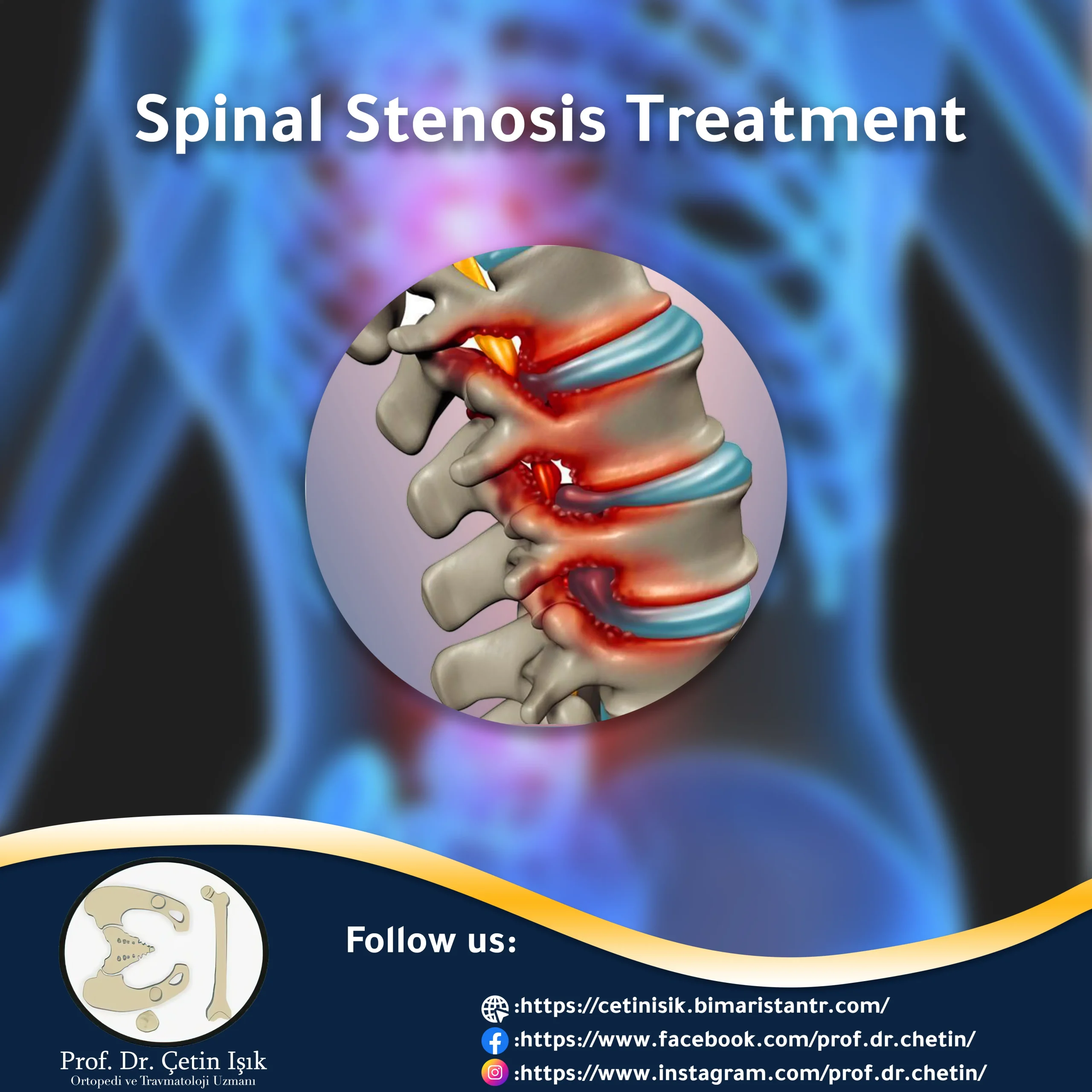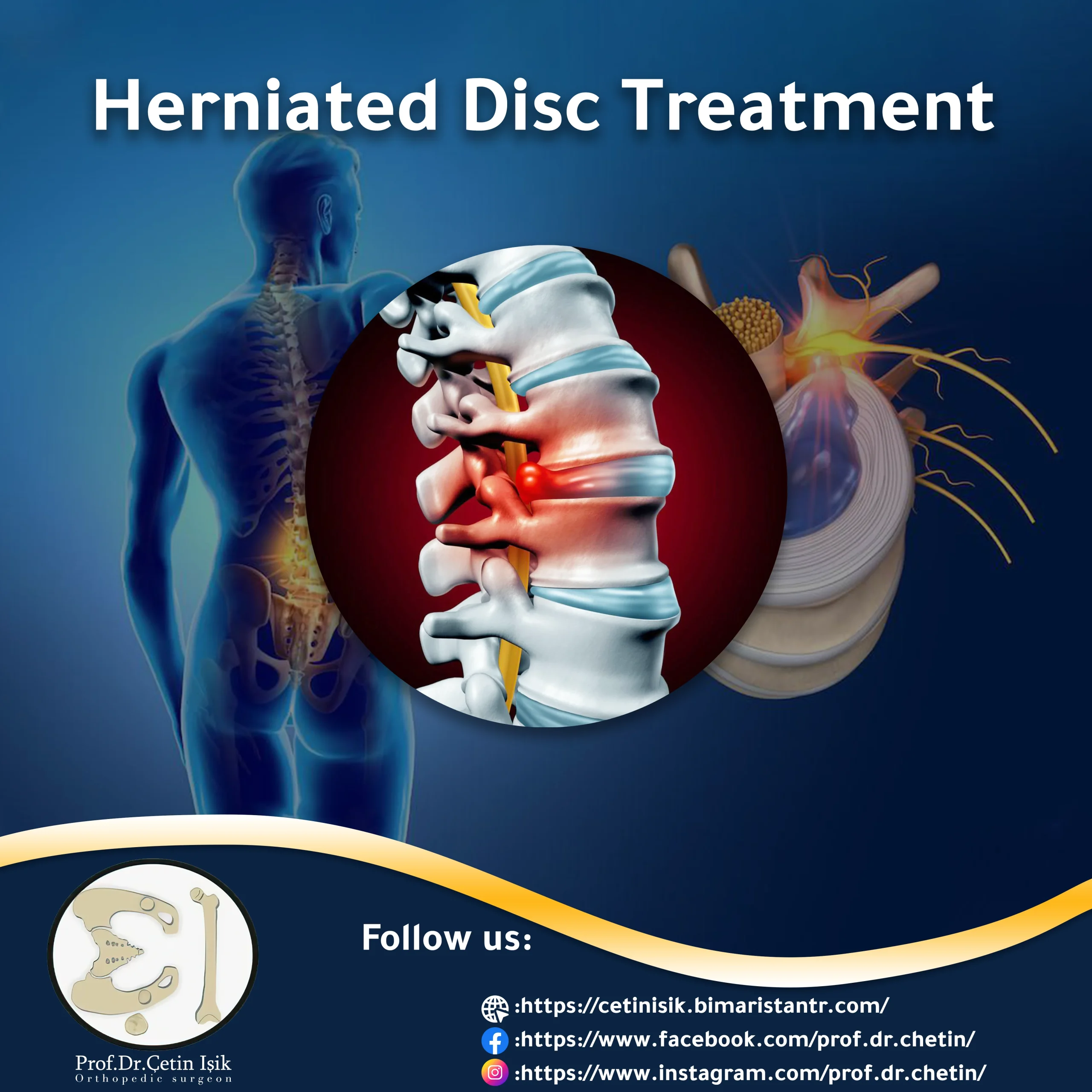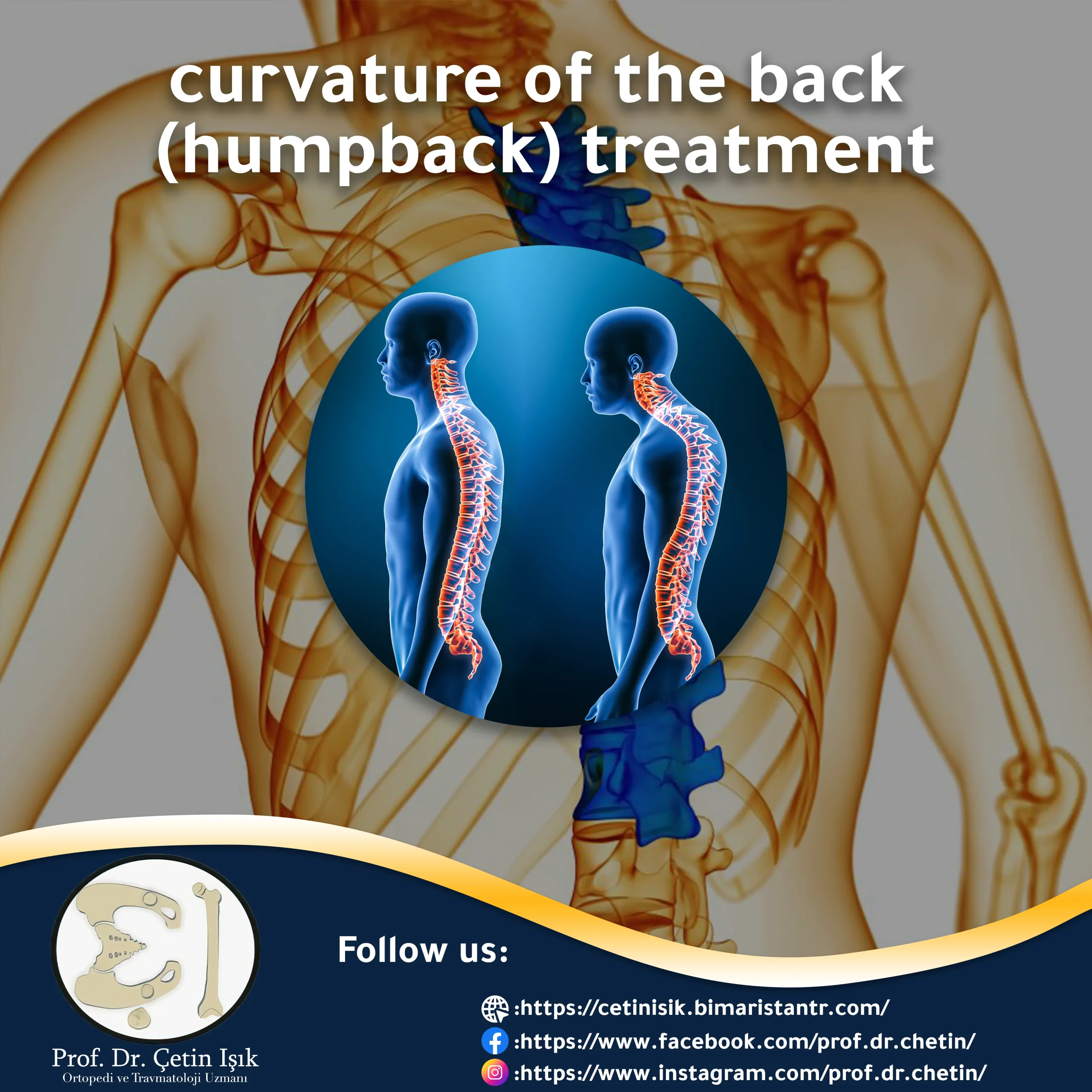Treatment of spinal stenosis tends to be gradual according to the severity of symptoms, from conservative management such as injections and medications to surgical treatment that improves the patient's quality of life.
What is spinal stenosis?
The spine consists of a vertical series of vertebrae that allow movement and rotation of the body and protect the spinal nerves passing through the openings of the vertebrae, which transmit brain signals to the rest of the body.
تضيق القناة الشوكية spinal stenosis أو ضيق القناة العصبية هي الحالة التي تضيق فيها المساحة في موقع أو أكثر من العمود الفقري، مما يؤدي إلى الضغط على الحبل الشوكي والجذور العصبية وتهيج الأعصاب مسبباً ذلك آلام الظهر أو الرقبة وSciatica في الحالات الشديدة، يحصل ضيق القناة ببطء وتدريجياً في أي مكان على طول العمود الفقري.
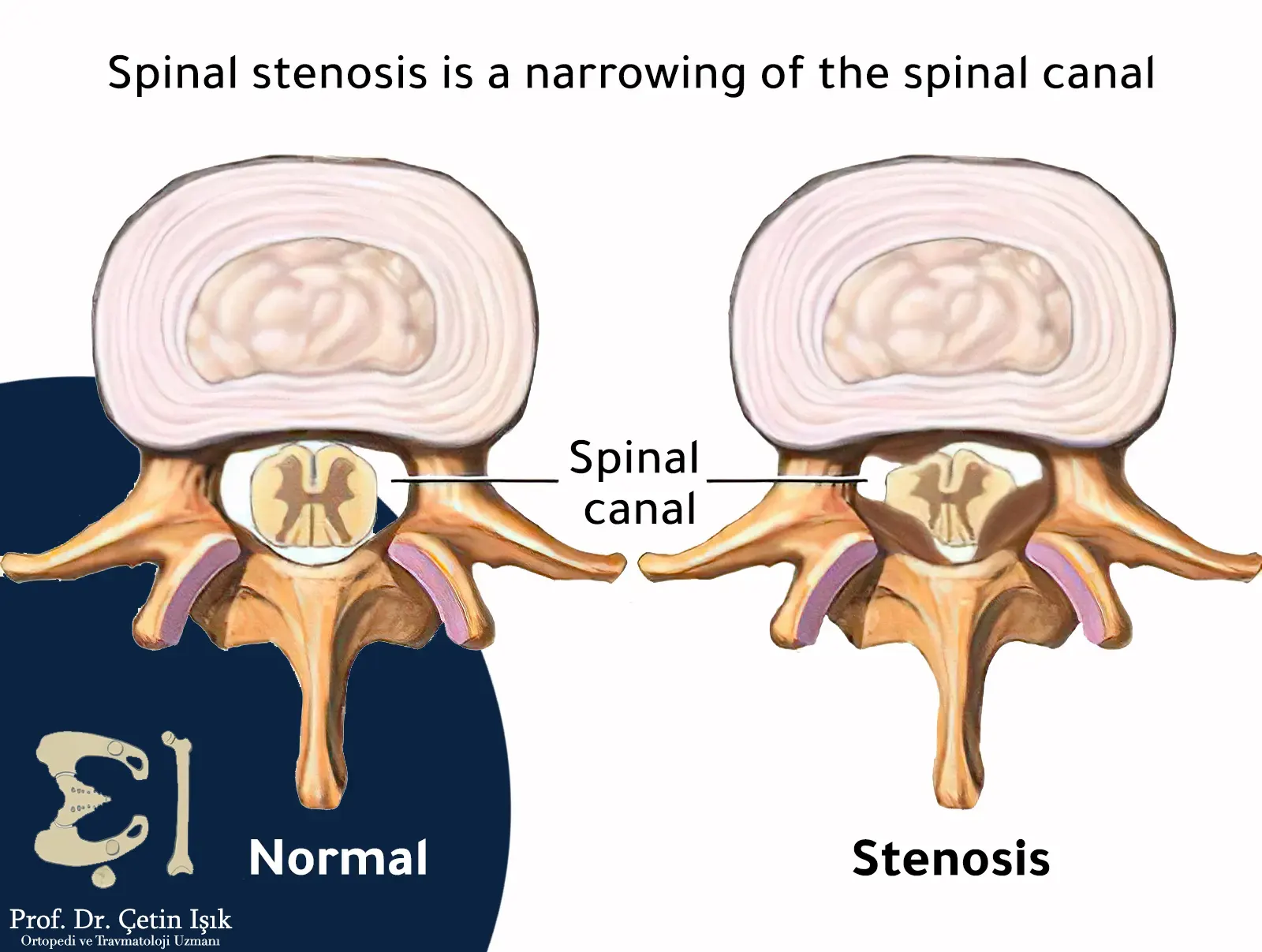
Spinal stenosis can occur in anyone, but it is more common in people 50 years of age or older.
Types of spinal stenosis
Lateral stenosis: It is a narrowing in the foramen between the vertebrae where the spinal nerve exits the spinal canal between two adjacent vertebrae. The stenosis that occurs causes compression of the spinal nerve, irritating it, and it most commonly occurs in the lower back (lumbar spinal stenosis), and may occur in the neck (cervical spinal stenosis). , rarely in the thoracic section.
Central stenosis: It is a narrowing of the central foramen that protects the spinal cord that passes inside the spine, causing compression of the spinal cord that leads to pain and/or dysfunction anywhere in the body below the pressure level, and is also common in the cervical and lumbar spine.
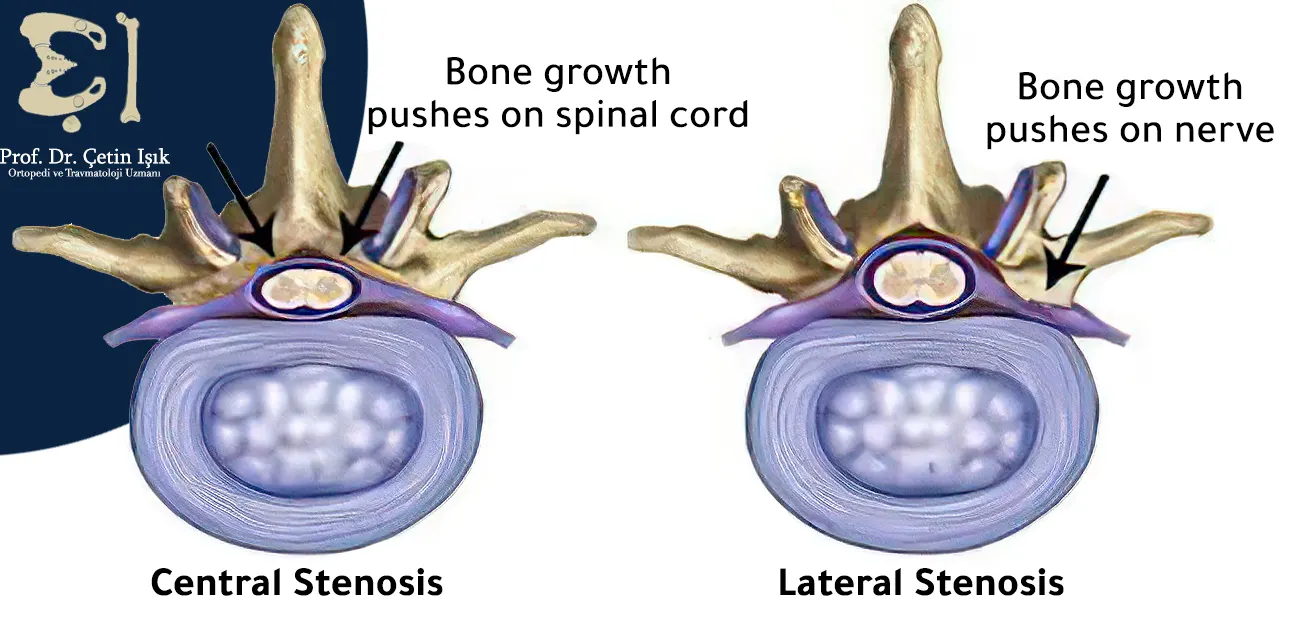
Symptoms of spinal stenosis
Symptoms of spinal stenosis are often described as:
- Slow progression of the disease over time.
- Intermittent episodes of pain.
- It occurs during certain activities (such as walking or cycling if there is a stenosis in the lower back).
- Neurological symptoms such as numbness and tingling appear late.
The symptoms experienced by the patient depend on the location of the stenosis in the spine, symptoms can include:
- Back and neck pain.
- Numbness, cramping, or weakness in the arms or legs.
- Pain extending to the legs.
- Balance problems.
- In severe cases, loss of bowel or bladder control, this is known as cauda equina syndrome, which requires immediate treatment.
Causes of spinal stenosis
Several factors are involved in spinal stenosis. Changes associated with aging in the spine, other diseases or genetic conditions can cause narrowing of the spaces and pressure on the spinal cord. It is important to know the cause in order to treat spinal stenosis.
Among these factors are:
- agingOne of the most important causes is canal stenosis. With age, the ligaments that keep the spine in place intensify and calcify. Bones and joints may also swell and bone spurs are formed pressing on the spinal cord due to the narrowing of the spinal canal.
- Slipped discThe disc bulges, making the spinal space narrower for the spinal cord.
- Osteoarthritis., which is more common in the elderly, can lead to degeneration of the intervertebral disc, bone enlargement, and consequently, narrowing of the spinal canal.
- rheumatoid arthritis.
- Spinal tumors.
- fractions resulting from accidents.
- Paget's diseaseIn the advanced case, new bone with distorted structure is formed, causing problems in the blood supply and bone structure and changing the spaces in the spinal canal.
- posterior longitudinal ligament ossificationCalcium deposits build up on the ligament and turn the fibrous tissue into bone that presses on the spinal nerves.
- congenital stenosisThe baby may be born with a small, narrow spinal canal.
- scoliosis.
- achondroplasiaIt is a genetic condition that causes problems in the growth and formation of the bones of the body, including the spine.
Diagnosis of spinal stenosis
To diagnose spinal stenosis, the surgeon begins by taking a detailed medical history from the patient and asking about the symptoms accompanying the complaint. Then, he conducts a physical examination, through which he examines the location of the pain and asks the patient to bend over and perform certain movements to test the range of motion and monitor walking and sitting.
Clinical tests of leg and/or arm strength, reflexes, and sensation (tingling and numbness) may be performed.
To confirm the diagnosis and determine the exact location and type of injury, the doctor resorts to radiography, which includes:
- X ray: It shows changes in the structure of the bone, such as the development of bumps or in the presence of erosion.
- MRI: It is the most common in diagnosing spinal stenosis. MRI provides detailed images of nerves, discs, and in the case of tumors.
- Computed tomography with myelography: If the MRI fails, it includes a small amount of dye to clearly see the spinal cord and nerves.

If you have any questions about spinal stenosis and the necessary tests for its diagnosis and treatment, do not hesitate Contact us To have your questions answered by Dr Çetin Işık.
Spinal canal stenosis treatment in Turkey
The choice of treatment for spinal stenosis depends on the location and severity of the stenosis, and the cause of symptoms.
In most cases, spinal stenosis can be treated with a combination of non-surgical treatments, such as physical therapy, pain relievers, activity modification and epidural injections.
When severe pain persists or neurological deficits appear despite conservative treatment, then surgery may be considered.
Physical therapy
Physiotherapy is an important component of the treatment journey for spinal stenosis. The specialist may prescribe a supervised physical therapy program to help the patient increase flexibility, fitness and endurance.
Stretching exercises help release ligaments and muscles from spasm, maintain spinal alignment, and move the neck and back properly.
Aerobic exercises build muscles that give the right balance to the body, and they can be done at home and without equipment.
Losing weight with good eating habits and exercise significantly relieves pressure on the spine.
Edit activity
To achieve good efficacy in the treatment of spinal stenosis, it is advised to avoid activities that aggravate the symptoms of the stenosis. For example, the recommended activity modification may include:
- Lean on a crutch or cane while walking and bend slightly instead of walking upright.
- Riding a bike instead of jogging or jogging while exercising.
- Choose the appropriate and comfortable chair when sitting.
Some patients may feel comfortable by wearing a neck or back brace, and it can help prevent the spine from moving in a painful way, however it is recommended to wear the braces for a short period to avoid muscle conditioning and resulting in less spinal support and more pain.
Medications
Common medications used to relieve spinal stenosis pain include:
- Non-steroidal anti-inflammatory drugs (NSAIDs), such as ibuprofen and naproxen, relieve pain and swelling caused by compression.
- Acetaminophen: works through the central nervous system to relieve symptoms of stenosis.
- muscle relaxants;
- Opioid medicines: useful in severe attacks and taken for a short-term course to avoid the complications accompanying them.
Injection for spinal canal stenosis
The goal in treating spinal stenosis is to reduce inflammation of the nerve root or spinal cord, by using X-rays to guide the needle to inject steroids into the epidural space or nerve blockers close to the damaged nerve.
The response varies from person to person, this method may give a feeling of relief for a short or long period.
Spinal canal stenosis surgery
The goal of surgery is to relieve pressure on the spinal nerve and spinal cord to allow the nerves to recover and function better, if nonsurgical treatment fails.
There are several surgical options for treating spinal stenosis:
aLaminectomy: It is one of the most common surgeries to treat spinal stenosis. The operation involves removing two plates and the spinous process between them to widen the spinal canal. The recovery period is long.
Foramenotomy: The surgery removes a small portion of the foramen and associated bony spurs. It is a less invasive method than a laminectomy, but not the best if the stenosis is widespread.
aDiscectomy and fusion: Disc degeneration plays an important role in stenosis of the spinal canal. In such a case, we may need to restore space for a collapsed disc by removing the abnormal disc segments and fusion of the vertebrae.
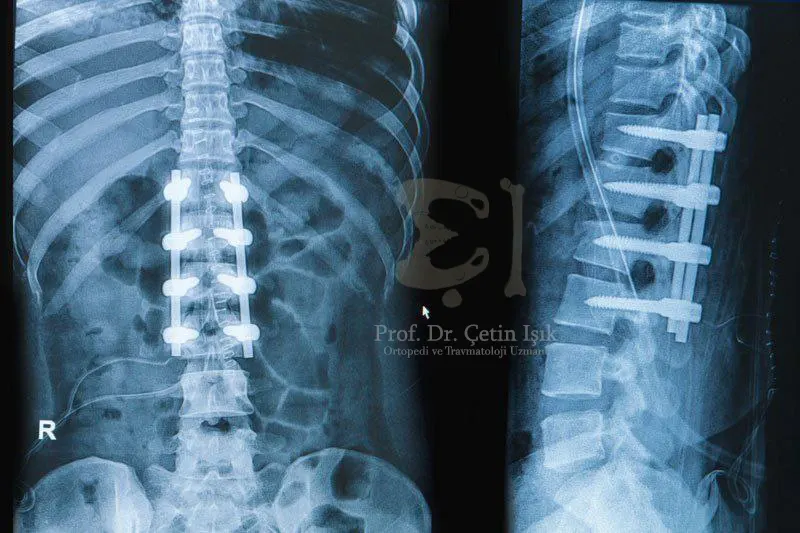
Microscopic decompression: One of the most prominent surgeries to treat canal stenosis to reduce pressure on the spinal cord, known as microendoscopy, this method is used to reduce trauma to tissues and allow early recovery and discharge from the hospital on the day after the operation, as the pain often subsides in less than 24 hours and is used This surgery is for the treatment of neurogenic claudication caused by lumbar stenosis.
Vertebral resection: The doctor rarely performs the complete excision of the vertebra body and the accompanying discs above and below in order to treat the narrowing of the spinal canal. This procedure is preferred if the stenosis is at several levels or there is extensive degeneration in the spine or is prone to a large fracture.
Other options for the treatment of spinal stenosis may be available, and advanced techniques are always sought in this area
Sources:
Common questions
The skill of the surgeon, the extent of spinal stenosis, and the patient's general health are all factors that affect the success of surgical treatment, but the results of spinal stenosis surgery are often good, with 80-90% patients recovering from their pain after surgery.
Like any surgical procedure, there are potential risks of serious complications, such as:
▪︎ infection.
▪︎ Allergic reaction.
▪︎ Nerve or spinal cord damage.
▪︎ Not relieving pain.
▪︎ The need for alternative surgery.
Full recovery after spinal stenosis surgery and return to daily activities usually takes about three months, and possibly longer for spinal fusion, this determines the complexity of the surgery and the efficiency of rehabilitation afterwards.


